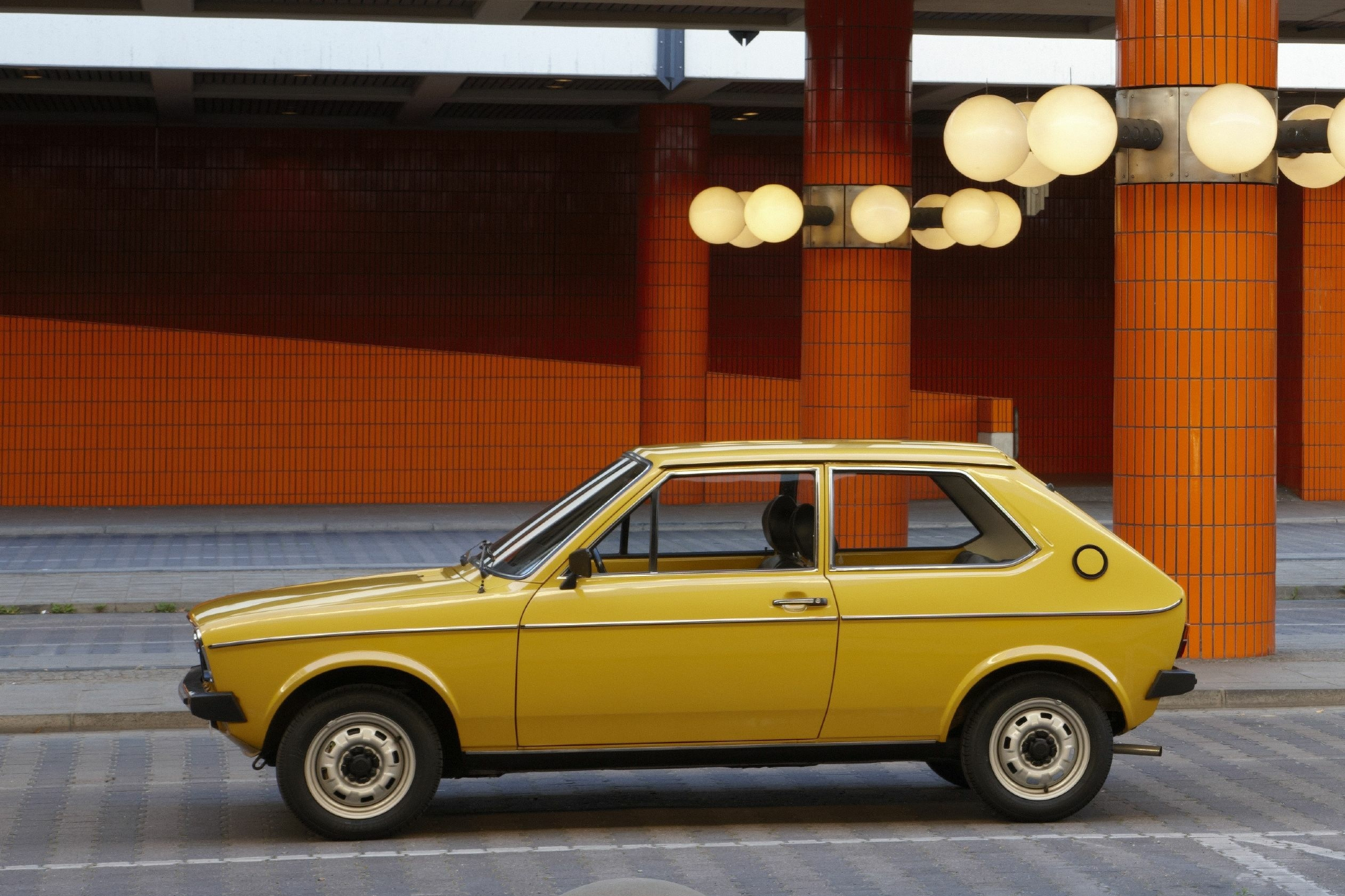
Timing might not be everything, but it worked for the Volkswagen Group in the 1970s. When the first oil crisis hit in 1973, Audi, a member of the VW Group, was about to begin production of the Audi 50, a small car that emphasized fuel economy. Introduced fifty years ago, the 1974 Audi 50’s small hatchback design lives on today in the 2024 Volkswagen Golf GTI and Golf R.
Why the Audi 50 mattered

As the image of youthful exuberance in the Audi 50 approaching the Brandenburg Gate shows in the advertisement above, Audi targeted the image of free-spirited independence and good times for the Audi 50’s compact body style. Its relatively low fuel consumption and purchase price appealed to first-time buyers and anyone looking for a car that didn’t suck down liters or gallons of gasoline. Audi never sold the Audi 50 in the U.S., but another car from the Volkswagen Group found a ready market in America.
The 1970s saw the height of the popularity of American muscle cars and large sedans. The Pontiac Firebird Trans Am, Ford Mustang Boss 302, Oldsmobile 442, Buick Gran Sport 455, Dodge Charger R/T, and other muscle cars may not have cornered all that well, but they sure made a lot of noise and went fast on straight roads. In the same time period, at over 23 feet, the 1974-76 Cadillac Fleetwood remains the longest American production sedan. Rising gas prices and fast, massive American
Audi stopped producing the Audi 50 in 1978 after selling fewer than 200,000 cars in Europe. Audi then focused on its mid-size and larger
Seven months after the first Audi 50 rolled off the line in Wolfsburg, Germany, Volkswagen began producing the Polo in the same factory. The Polo, also called the Mk1 Golf, was the same car as the Audi 50, minus a few trim details. The Polo was called various names in different countries. It was the Rabbit in the U.S. until the third generation in 1984 when VW changed the name to Golf.
Volkswagen has done well with the Golf, selling more than 37 million vehicles by the end of 2023, according to a VW news release.
What was so special about the Audi 50

The Audi 50 and VW Polo (Golf) was the then-modern replacement for the Volkswagen Beetle. The Beetle was a rear-wheel drive car with an air-cooled engine which was located in the rear of the car. The water-cooled engine in the front-wheel drive Audi 50 was in the front. Moving the engine to the front likely helped with cooling because air could reach the motor’s radiator better in front, but another big change for owners was cargo capacity.
With the Audi 50 engine in the front and its hatchback rear door, there was much more usable storage than in a Beetle. The 1974 Volkswagen Beetle was about 18 inches longer and six inches wider than the 1974 Audi 50/VW Polo. Even with the Beetle’s larger dimensions, it was hard to fit much cargo inside.
At various times, I owned a 1963 Beetle, a 1966 Beetle, and a 1985 Golf GTI. Trying to pack much for a weekend trip in a Beetle’s cramped front trunk with the curved lid was frustrating, while it was super easy to fit a lot of stuff in the back of the GTI. Granted, my Beetles were from an earlier decade than the earliest Audi 50/Golf, and my GTI was a decade newer, but the relative body sizes and shapes didn’t change much.
The Golf will live on. VW discontinued the regular Golf after the 2021 model in favor of the Golf GTI and Golf R performance versions. The next generation Golf, which isn’t due until 2028, will be a battery-electric vehicle (BEV).




